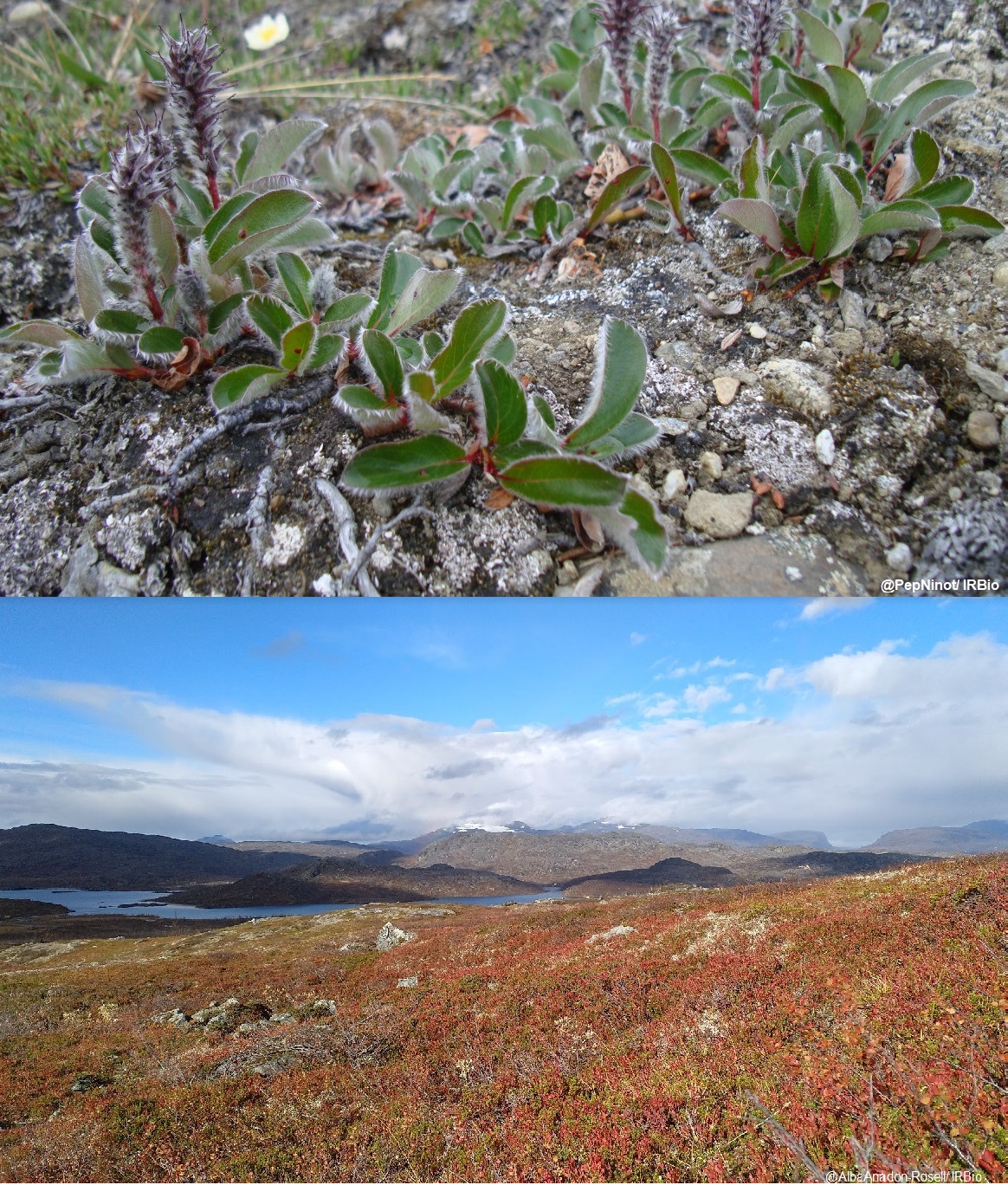Taller vegetation in the tundra, encouraged by climate change
The biome of the Arctic and alpine tundra is characterized by the dominance of grasses and low shrubs, all of small size. The climatic and fertility limitations of those environments keep primary production at very low levels, comparable to those of desert or semi-desert zones. But as these limitations act even more strongly on the decomposition processes of organic matter, tundra soils accumulate huge amounts of organic carbon, which could reach 50% of the carbon stocks of all the world's soils.
Climate warming, which in the last three decades has been around 1 °C in summer and 1.5 °C in winter in the Arctic area, is encouraging the mineralization of this organic carbon, with the consequent release of greenhouse gases. At the same time, it is known that it also promotes changes in the vegetation cover of the tundra, such as the increase of low shrubs against grasses.
A recent study published in the journal Nature (https://www.nature.com/articles/s41586-018-0563-7), in which about 130 researchers have collaborated, among them Dr Josep Maria Ninot and Alba Anadon from the Biodiversity Research Institute of Universitty of Barcelona and which is led by scientists from the Senckenberg Biodiversity and Climate Research Centre Germany) and the University of Edimburgh, analyzes these changes in vegetation structure. It is based on the most exhaustive data set so far on tundra plants, gathering information from almost 120 localities, mostly from the Arctic regions but also from Alpine mountains, such as the Alps and the Pyrenees. The database used, Tundra Trait Team (https://onlinelibrary.wiley.com/doi/10.1111/geb.12821), comes from a collaborating action, and is open to other studies. The work has the participation of Josep M. Ninot and Alba Anadon Rosell, members of the Institut de Recerca de la Biodiversitat (IRBio) and the Department of Evolutionary Biology, Ecology and Environmental Sciences, of the University of Barcelona.
In the study, the vegetation is analysed based on five plant functional treats, such as the canopy height or the nitrogen concentration in the leaves, of some 450 tundra species, which results in a total of more than 56,000 records. The variation in these traits is observed both in the repetition of their measurement in the same locality after 30 years, as well as comparing observations of the same species along a gradient of temperatures in space.
The clearest change observed is an overall increase in the height of the typical plant communities of the tundra in the last three decades. This increase is partly due to an increase in the height of previously dominant plants, but it is also the result of the inclusion in the tundra community of taller species, previously restricted to particular environments. As for other traits, the response is more variable, although there is a trend to be more pronounced in the wet variants of the tundra than in the variants limited by water. According to Anne Bjorkman, first author of the article, "If taller plants continue to spread at the current rate, the plant community height could increase by 20 to 60% by the end of the century."
The increase in vegetation size could accelerate the retraction of permafrost, and therefore the release of greenhouse gases, since taller plants retain more snow, isolating the soil and preventing it from freezing quickly and deeply in winter. "Although there are still many uncertainties, taller tundra plants could fuel climate change, both in the Arctic and for the planet as a whole" Bjorkman concludes.
Pictures:
Shrubby tundra in Abisko, Sweden (photo, Alba Anadon-Rosell)
Salix arctica in Zackenberg, Greenland (photo, Josep M. Ninot)
